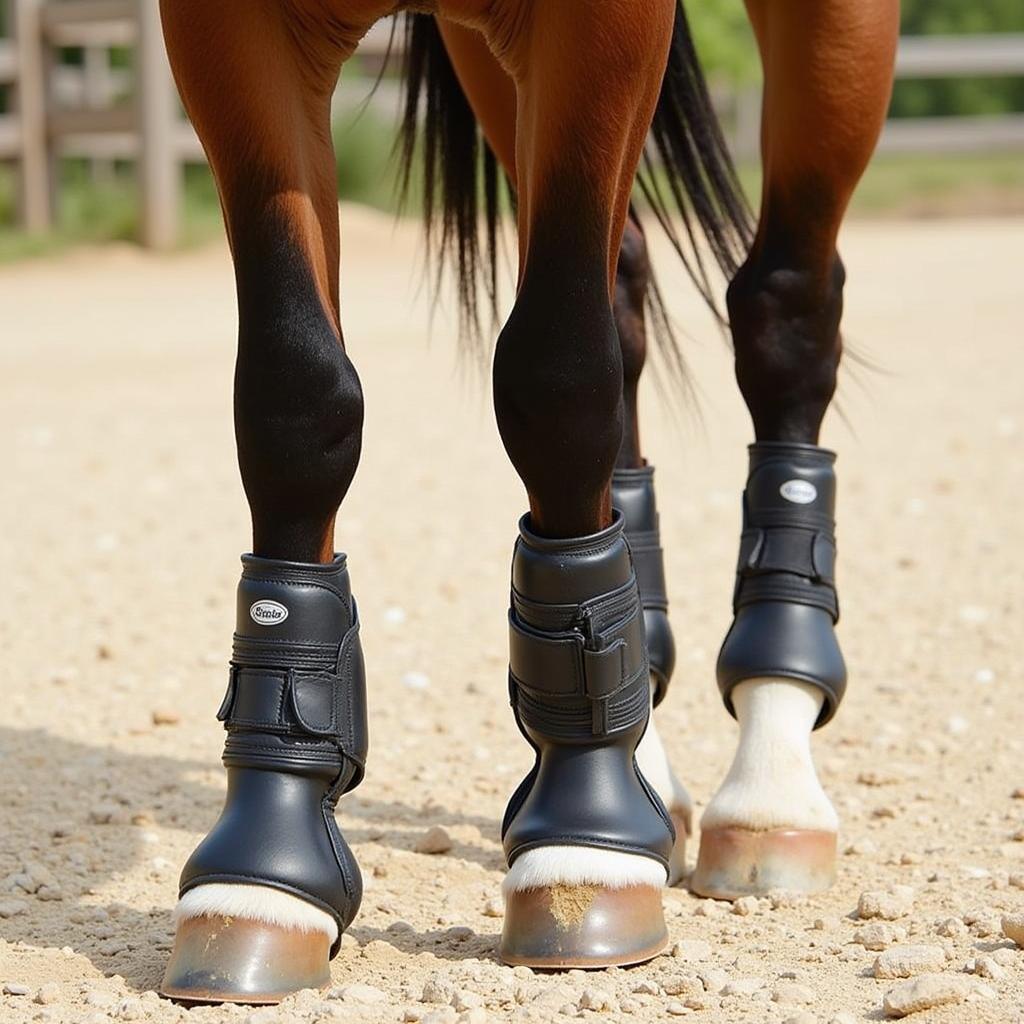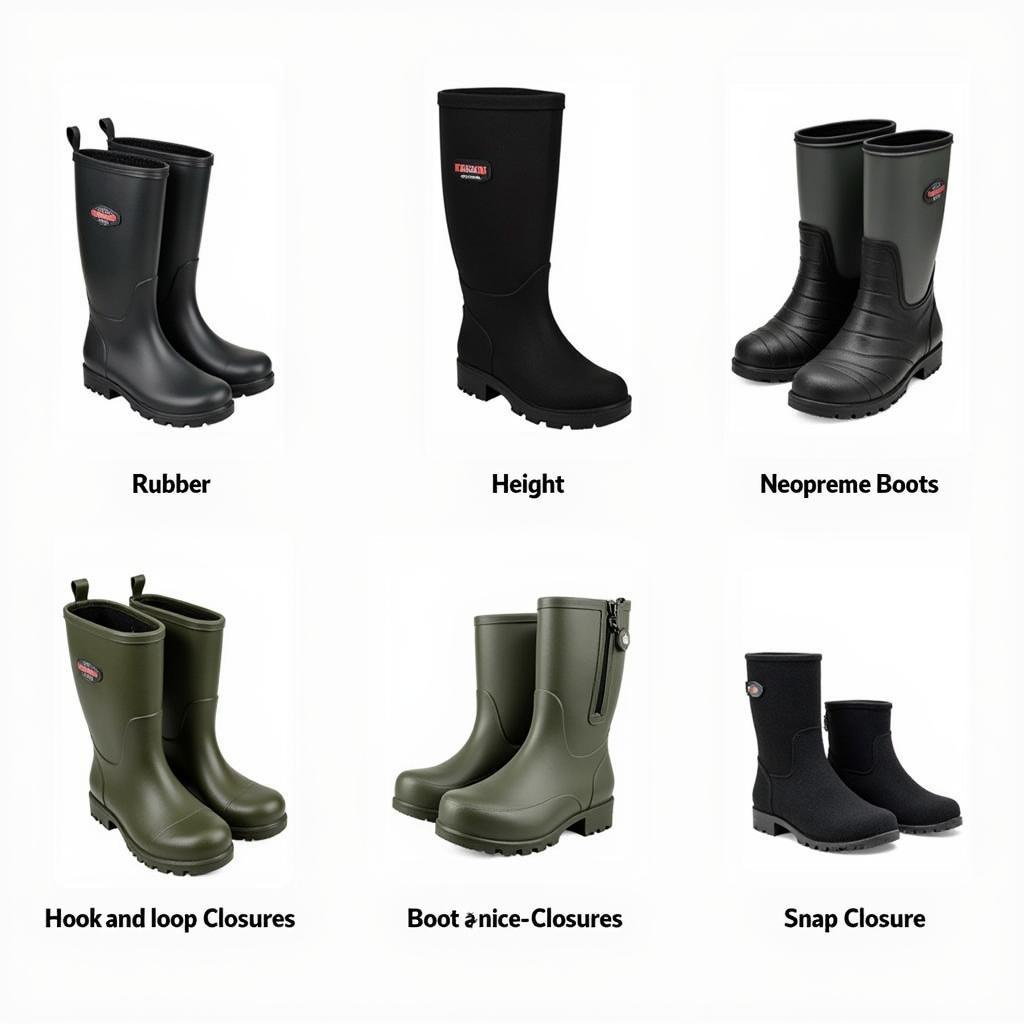Pinch boots, also known as bell boots, are a common piece of protective gear used by horse owners to prevent injuries to the pastern and coronary band area of a horse’s hooves. They are particularly useful for horses who tend to interfere, meaning they strike one leg with another, often during movement. Pinch boots provide a layer of cushioning and protection, reducing the risk of cuts, abrasions, and even lameness.
Understanding the Importance of Pinch Boots for Horses
Horses are prone to interfering, especially during activities like riding, jumping, or even turnout in the pasture. This can happen for a variety of reasons, including conformation, gait irregularities, fatigue, or even just plain clumsiness.
When a horse interferes, the impact of the hoof strike can cause significant damage to the delicate tissues around the coronary band and pastern. The coronary band is especially vulnerable, as it is responsible for hoof growth. Damage to this area can result in blemishes, deformities, and even long-term lameness.
 Horse Legs with Pinch Boots
Horse Legs with Pinch Boots
Pinch boots act as a barrier, absorbing some of the shock from an interfering strike and deflecting the blow away from the sensitive areas of the hoof.
Choosing the Right Pinch Boots for Your Horse
Selecting the appropriate pinch boots is essential for both effectiveness and your horse’s comfort.
- Material: Pinch boots are typically made from rubber, synthetic materials like neoprene, or a combination of both. Consider the level of durability, flexibility, and breathability required for your horse’s activity level and environment.
- Fit: Proper fit is crucial. Pinch boots should fit snugly around the pastern without being too tight. They should extend below the coronary band and have a secure closure mechanism to prevent them from slipping or rotating.
- Height: Pinch boots come in various heights, often categorized as low, medium, and high. The ideal height depends on your horse’s needs. Low pinch boots are suitable for general use and turnout, while higher boots offer increased protection for horses prone to severe interfering.
 Variety of Pinch Boots for Horses
Variety of Pinch Boots for Horses
When to Use Pinch Boots
Pinch boots are beneficial in a variety of situations:
- During Riding: For horses prone to interfering, especially during strenuous activities like jumping or fast work.
- Turnout: To provide protection for horses who interfere with themselves in the pasture.
- Trailering: To prevent injuries caused by shifting weight and potential hoof strikes during transport.
- Rehabilitation: To support and protect injured or healing tissues in the pastern and coronary band area.
It’s important to note that pinch boots should not be used as a permanent solution for interfering. If your horse consistently interferes, it’s essential to consult with a veterinarian or equine professional to identify and address any underlying issues, such as hoof imbalances or gait abnormalities.
Maintaining Your Horse’s Pinch Boots
Proper care and maintenance will prolong the life of your horse’s pinch boots and ensure they continue to provide effective protection.
- Regular Cleaning: After each use, remove any dirt, debris, or hair from the boots.
- Inspection: Check the boots for any signs of wear and tear, such as cracks, tears, or loose closures. Replace worn-out boots promptly.
- Proper Storage: Store pinch boots in a cool, dry place when not in use.
By following these guidelines, you can help keep your horse’s hooves safe and sound.
FAQs about Pinch Boots for Horses
Do pinch boots restrict a horse’s movement?
No, properly fitted pinch boots should not restrict a horse’s natural movement. They are designed to allow for a full range of motion while providing protection.
Can I leave pinch boots on my horse overnight?
While pinch boots can be used for extended periods, it’s generally not recommended to leave them on overnight. Prolonged use can trap moisture and increase the risk of fungal or bacterial infections.
My horse doesn’t interfere, do I still need pinch boots?
Even if your horse doesn’t have a history of interfering, pinch boots can still be beneficial for added protection during certain activities, such as trailering or riding in challenging terrain.
Can I use pinch boots on my horse’s hind legs?
While pinch boots are more commonly used on the front legs, they can be used on the hind legs if needed. Some horses interfere with their hind legs, particularly during activities like jumping.
What should I do if my horse injures its pastern or coronary band?
If your horse sustains an injury to its pastern or coronary band, it’s crucial to contact your veterinarian immediately. Prompt veterinary attention is essential for proper diagnosis and treatment.
For more information on horse care and equestrian gear, browse our selection of horse totes and bags and explore our articles on horse riding gaiters.
Understanding the importance of pinch boots and how to choose and use them properly empowers horse owners to provide their equine companions with the best possible care and protection. If you have any further questions about pinch boots or other equine health concerns, don’t hesitate to reach out to our team at Justus Horses USA. You can contact us at 0772127271, email us at [email protected], or visit us at our location at QGM2+WX2, Vị Trung, Vị Thuỷ, Hậu Giang, Việt Nam. We have a dedicated customer service team available 24/7 to assist you.